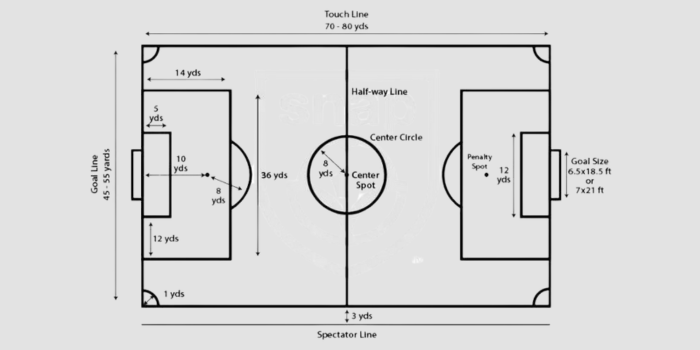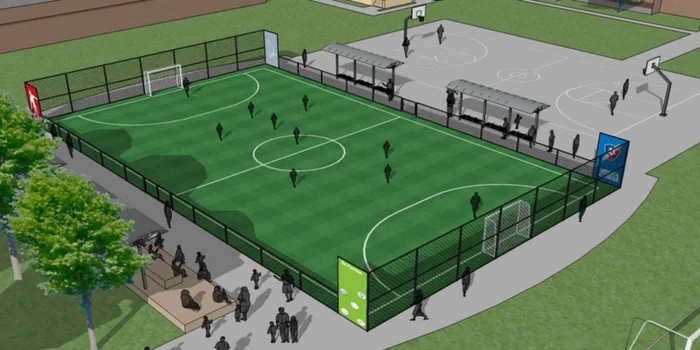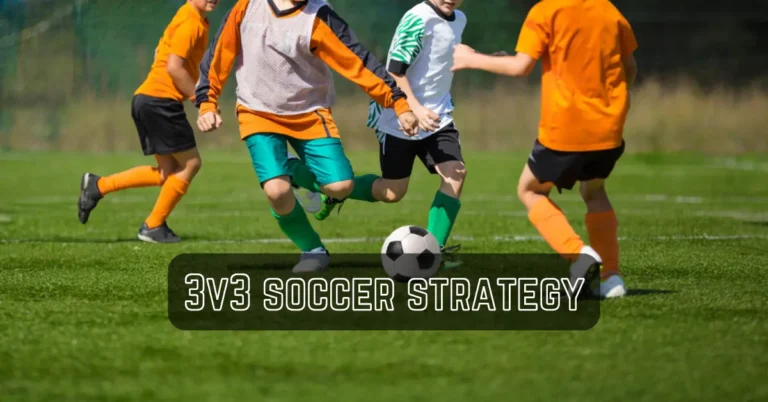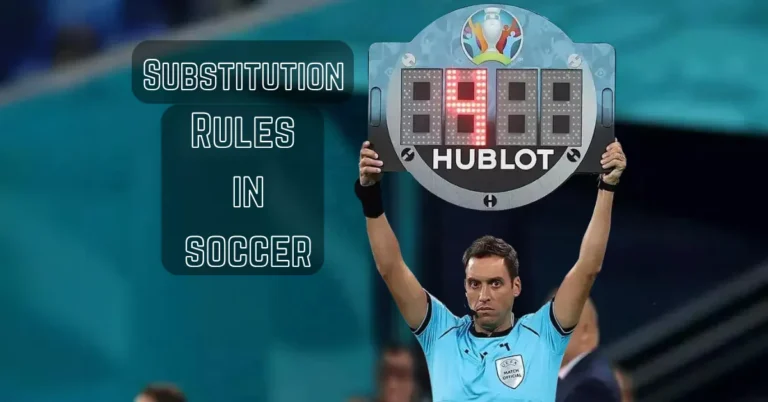Junior Soccer Field Dimensions – Why These Fields Are Small?
Soccer, a sport cherished by millions worldwide, extends its influence to the youth, shaping the skills and passion of future athletes. One crucial aspect that often goes unnoticed is the junior soccer field dimensions.
In the dynamic world of youth soccer, understanding the dimensions of the playing field is paramount. It goes beyond merely marking lines on the grass; it directly influences the development of budding soccer talents.
Junior Soccer Field Dimensions

The proportions of a soccer pitch for junior players are not chosen at random; rather, they are carefully created to accommodate the players’ physical, cognitive, and emotional growth from the beginning of their careers.
The purpose of this intelligent approach is to establish an atmosphere that encourages the development of both individuals and the dynamics of teams.
U8 to U10 Field Dimensions (7v7)

For the U8 to U10 age groups, the soccer field dimensions are designed with a focus on player comfort and engagement. The field size is smaller, allowing young players to grasp the fundamentals of the game without feeling overwhelmed.
The dimensions typically range from 55 to 65 yards in length and 35 to 45 yards in width for 7v7 soccer.
These dimensions serve a dual purpose – ensuring adequate space for skill development and promoting a more significant involvement of all players on the field. The reduced field size encourages more touches on the ball, enhancing ball control and dribbling skills.
See Also Soccer Drills For Kids
U11 to U12 field Dimensions (9v9)

As players progress to the U11 to U12 age groups, the dimensions of the soccer field undergo a subtle but significant change. The field size expands to accommodate the growing skills and strategic understanding of the players.
Dimensions for this age group generally range from 70 to 80 yards in length and 45 to 55 yards in width for 9v9 soccer.
This increase in field size allows for a more dynamic and tactical game, promoting teamwork and spatial awareness. The transition phase from smaller to larger fields prepares players for the challenges of the adult game, emphasizing strategic play and positional awareness.
U13 to U19 Field Dimensions (11v11)

The U13 to U19 age groups experience another shift in field dimensions. The soccer field expands further to align with the international standards of adult play. Dimensions for this age group typically range from 110 to 120 yards in length and 60 to 80 yards in width for 11v11 soccer.
The larger field size not only mirrors the adult game but also provides young players with an opportunity to adapt to the physical demands of a full-sized pitch. This transition prepares them for the complexities of competitive soccer, enhancing their overall development.
See Also Soccer Triangles
Why Junior soccer fields are smaller?

Junior soccer fields are designed to be smaller than their adult counterparts for several important reasons, all of which contribute to the overall development and safety of young players.
Physical Development
Smaller fields reduce the physical strain on young players, catering to their ongoing physical fitness development.
Shorter distances covered during matches allow junior players to focus on refining soccer skills without excessive fatigue.
Technical Skill Emphasis
Compact fields offer more opportunities for players to engage with the ball, enhancing their dribbling, passing, and ball control skills. By creating a controlled environment, smaller fields facilitate concentrated skill development and mastery for young soccer enthusiasts.
Increased Involvement
Reduced field size ensures that each player gets more touches on the ball, fostering a higher level of active participation. Smaller teams on compact fields promote inclusivity, with every player having a significant role in the game.
Teamwork in Small fields

Confining play to a smaller area encourages teamwork, cooperation, and effective communication among junior players. The limited space challenges players to develop strategic thinking and a deeper understanding of team dynamics.
See Also Soccer Practice Time
Safety Considerations
Smaller fields mitigate the risk of collisions and injuries, ensuring a safer environment for youth soccer.
Reduced player speed on compact fields minimizes the likelihood of accidents and promotes a safer sporting experience.
Psychological Factors
Playing on a smaller field provides young players with a sense of accomplishment, contributing positively to their psychological development. Increased scoring opportunities and positive interactions with the ball on compact fields boost confidence among junior athletes.
FAQs
A U12 soccer field typically measures around 70-80 yards in length and 50-55 yards in width.
The size of a FIFA youth field can vary, but for players aged 12 and under (U12), it is generally similar to the dimensions of a U12 field, around 70-80 yards in length and 50-55 yards in width.
The size of a U15 soccer field is usually larger than that of a U12, ranging from 100-110 yards in length and 50-100 yards in width.
The dimensions of a mini soccer field, often used for younger age groups, are smaller, typically around 50-70 yards in length and 25-50 yards in width.
Conclusion
The Junior soccer field dimensions from U8 to U19 are not arbitrary but carefully designed to nurture young talent. Standardized dimensions ensure fair competition, aid in skill development, and contribute to the overall safety of the players. As we witness the evolution of these standards, it’s clear that they play a vital role in shaping the future of soccer.







